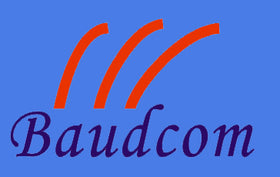In today's increasingly connected world, the demand for high-speed, reliable, and long-distance data transmission has never been greater. Fiber media converters play a crucial role in bridging different networking media, enabling seamless communication between traditional copper Ethernet cables and advanced fiber optic networks. These devices are essential components in expanding network infrastructure, whether for corporate offices, data centers, or telecommunications systems. By converting electrical Ethernet signals into light signals, fiber media converters allow data to travel over longer distances with minimal loss and interference, significantly enhancing network performance. As technology continues to evolve, understanding the functionalities and benefits of fiber media converters becomes vital for organizations seeking to optimize their network capabilities and ensure secure, high-speed connectivity across vast areas.
What is a fiber media converter?
A fiber media converter is a device that enables the connection between different types of network media, such as converting electrical signals from Ethernet cables to optical signals for fiber optic cables. It allows seamless communication between copper-based Ethernet networks and fiber optic networks, extending network reach and enhancing performance over longer distances. These converters are widely used in telecommunications, data centers, and enterprise networks to facilitate high-speed data transfer with minimal signal loss.
Do fiber media converters require special cables?
Yes, fiber media converters specifically require fiber optic cables, which are different from standard Ethernet cables. These cables are made of thin glass or plastic fibers that transmit light signals, enabling high-speed and long-distance communication. Depending on the converter type, you may need specific connectors like LC, SC, or ST to connect the fiber cables properly. It is essential to use the correct optical fiber type (single-mode or multi-mode) compatible with the converter specifications.
Are fiber media converters secure?
Fiber media converters are generally considered secure because fiber optic cables are inherently resistant to electromagnetic interference, eavesdropping, and signal tapping. Unlike copper cables, fiber optics do not emit signals that can be intercepted easily, making data transmission more secure. Additionally, many converters have built-in security features like encryption or port filtering, further safeguarding network data from unauthorized access.
Can you convert Ethernet to fiber?
Yes, Ethernet signals can be converted to fiber optic signals using a fiber media converter. These devices translate electrical Ethernet data into light signals suitable for fiber optic cables. This conversion is essential in extending the Ethernet network over long distances where traditional copper cabling is limited by distance and interference, thereby improving network reach and reliability.
How do you install a fiber media converter?
Installing a fiber media converter involves connecting the converter to the Ethernet device using an Ethernet cable and attaching fiber optic cables to the converter's fiber ports. Power is then supplied to the device, which often requires powering via a power adapter or PoE. Properly configuring network parameters and ensuring correct fiber type and connector compatibility are crucial steps for seamless operation.
What is the difference between a PoE extender and a media converter?
A PoE (Power over Ethernet) extender supplies power and data over Ethernet cables to connected devices such as cameras or access points, enabling installation without separate power sources. A media converter, however, primarily converts signals between different media types, like Ethernet to fiber, without necessarily providing power. PoE extenders focus on extending power along with data, while media converters focus on media type translation.
What is the biggest downside to fiber optic cabling?
The principal drawback of fiber optic cabling is its higher installation cost compared to copper cables, mainly due to expensive fiber optic cables, connectors, and specialized equipment. Installation also requires skilled technicians because fiber cabling is delicate and sensitive to bending, which can damage the fibers. Moreover, troubleshooting fiber networks can be more complex and costly.
Is Cat8 overkill for home use?
Yes, Cat8 cabling is generally considered overkill for typical home networking because it supports extremely high speeds (up to 40Gbps) over short distances (up to 30 meters), which exceeds most home internet requirements. For average household use, Cat6 or Cat6a cables provide sufficient performance at a lower cost and complexity.
What is the best free media converter?
There are no widely recognized free media converters for commercial or professional use because hardware conversion requires physical devices. However, software tools like VirtualBox or network simulation platforms can emulate media conversion for educational purposes. For actual hardware, reputable brands such as TP-Link, Cisco, or StarTech offer reliable media converters at reasonable prices.
Do fiber media converters need power?
Yes, most fiber media converters require power to operate, typically supplied via a power adapter or sometimes through Power over Ethernet (PoE) technology. Power is used to drive internal electronics that perform signal conversion. Some smaller or passive devices might not need power, but active media converters generally do.

